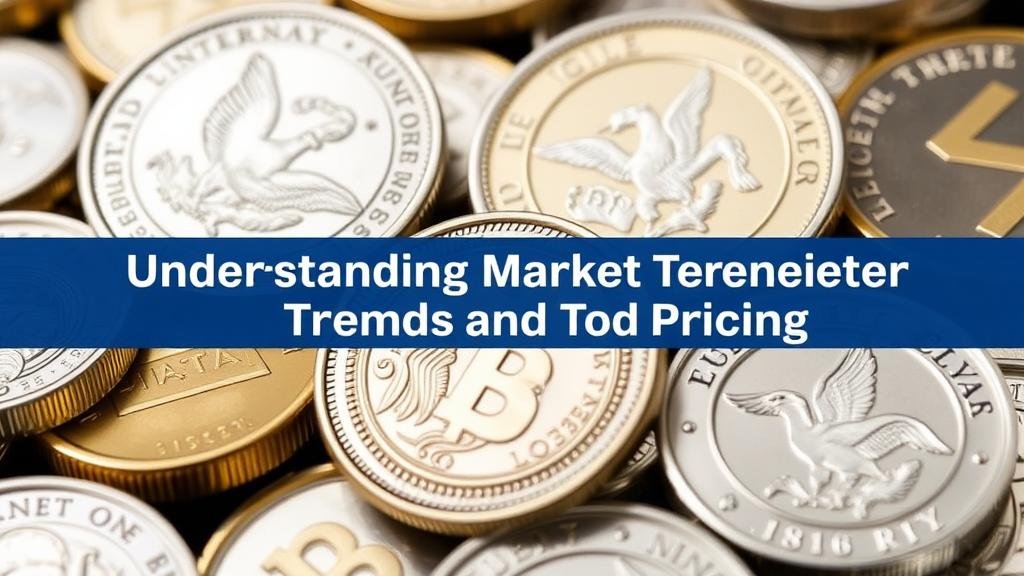Selling Gold and Silver Coins: Understanding Market Trends and Pricing
Selling Gold and Silver Coins: Understanding Market Trends and Pricing
As the global economy fluctuates, investment strategies shift, and one asset class that often comes under scrutiny is precious metals, specifically gold and silver coins. Understanding the nuances of selling these coins, including market trends and pricing dynamics, is crucial for both experienced investors and newcomers looking to diversify their portfolios. This article provides a comprehensive look at how to effectively navigate the market for gold and silver coins.
The Value Proposition of Precious Metals
Gold and silver have long been regarded as safe-haven assets, particularly during times of economic uncertainty. Buyers are often motivated by several factors:
- Inflation Hedge: Precious metals are often used as a hedge against inflation. When fiat currencies lose value, gold and silver tend to maintain or even increase in value.
- Portfolio Diversification: Incorporating precious metals can reduce volatility in an investment portfolio, providing a buffer against market fluctuations.
- Physical Asset: Unlike stocks and bonds, gold and silver coins offer tangible value, appealing to those who prefer physical assets.
American investors, for instance, often turn to gold coins such as the American Gold Eagle or silver coins like the American Silver Eagle for their investment portfolios due to their liquidity and market recognition.
Market Trends Influencing Pricing
The pricing of gold and silver coins is influenced by various market trends, and understanding these can significantly impact buying and selling decisions. Here are some key trends to consider:
- Global Economic Conditions: Economic indicators such as GDP growth, unemployment rates, and geopolitical tensions can sway gold and silver prices. For example, during the COVID-19 pandemic, gold prices surged to over $2,000 per ounce due to increased uncertainty.
- Interest Rates: Lower interest rates generally encourage investment in precious metals, as the opportunity cost of holding non-yielding assets like gold diminishes. On the other hand, rising rates can lead to decreased demand.
- Currency Strength: A weakening U.S. dollar typically leads to higher gold and silver prices. Investors often look to precious metals as alternative investments when dollar strength declines.
Understanding Pricing Models
The pricing of gold and silver coins involves more than just the spot price of the metal. Various factors contribute to the final price paid by buyers:
- Spot Price vs. Premium: The spot price is the current market price of gold or silver per ounce. But, coins often sell at a premium over the spot price, which accounts for minting costs, distribution expenses, and collector value. For example, American Gold Eagles might carry a premium of $50-$100 over the spot price.
- Condition and Rarity: Coins in pristine condition or with limited mintage usually command higher prices. For example, historical coins like the 1933 Double Eagle have fetched millions at auction due to their rarity and historical significance.
- Market Demand: Daily fluctuations in supply and demand affect pricing. Increased demand during economic downturns can push prices higher, while a surplus in supply can lead to price reductions.
Real-World Applications: Buying and Selling Strategies
When dealing with gold and silver coins, both buyers and sellers must strategize effectively. Here are actionable approaches:
- Timing the Market: Monitoring market trends can inform buyers when to purchase or sell. For example, purchasing when prices dip or selling during price surges maximizes financial returns.
- Choosing Reputable Dealers: It is essential to buy or sell coins through established dealers who provide transparent pricing and fair practices. Researching reviews and ratings can prevent potential scams.
- Regular Valuation: Periodically assessing the value of one’s holdings through appraisals can help investors understand their wealth’s current standing and plan for future actions.
Conclusion: Navigating the Precious Metals Market
Investing in gold and silver coins can be a lucrative venture, provided that market trends and pricing dynamics are understood. As global economies evolve, prices can fluctuate dramatically based on various factors such as interest rates, economic indicators, and geopolitical events. By staying informed and employing sound buying and selling strategies, investors can make educated decisions that enhance their financial portfolios.
In summary, whether you are a seasoned investor or a newcomer, remember to:
- Monitor economic indicators that may affect precious metal prices.
- Understand both spot prices and premiums when buying and selling.
- Choose reputable dealers and stay informed about market trends.
- Think long-term; investing in precious metals can, over time, provide significant returns.



